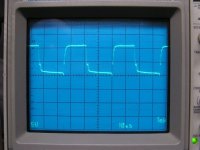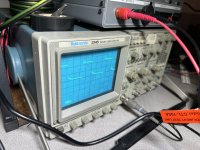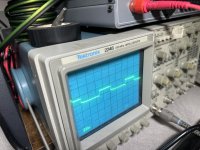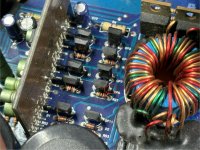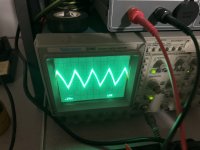I would like to replace the larger positive wires as in 2 spots on one of the larger wires the copper is exposed, and I am getting blue 8g OFC wire and want to know if I can use that to replace the larger red wires.
I also have green 14 gauge and I want to know if I can replace the smaller wires with that (the green 14 gauge is CCA, if the factory is OFC I will leave them)
I also have green 14 gauge and I want to know if I can replace the smaller wires with that (the green 14 gauge is CCA, if the factory is OFC I will leave them)
Use a dial caliper to measure them.
OFC is pointless. A tinned copper wire would be best, overall.
OFC is pointless. A tinned copper wire would be best, overall.
OFC is oxygen free copper. It's generally a very finely stranded wire that's prone to corrosion. The OFC wire that you generally see has a gold coloring through the clear insulation. All for appearance.
Also stay away from CCA.
Tinned copper wire has a tin coating that prevents corrosion. It's what's used in marine and other tough environments. It's not fancy but very good wire.
Also stay away from CCA.
Tinned copper wire has a tin coating that prevents corrosion. It's what's used in marine and other tough environments. It's not fancy but very good wire.
My OFC doesn't look gold, it looks tinned (silver), is there such thing as tinned OFC? Or would that just be tinned
Tinned OFC? If it exists, I've never heard of it. OFC has generally been one of those marketing things that everyone believes is absolutely required and if you don't have OFC, you're a dullard. Just one of many articles on OFC:
https://www.wiringdepot.com/jt-t-tech-articles/What-you-should-know-about-CCA-and-OFC-Wire
OFC isn't bad but choosing OFC wire over other wire because it's OFC makes no sense. Untinned wire that's ultra-finely stranded is the worst. It may look fancy but looks aren't what's important when you need something that will last... very nearly forever.
https://www.wiringdepot.com/jt-t-tech-articles/What-you-should-know-about-CCA-and-OFC-Wire
OFC isn't bad but choosing OFC wire over other wire because it's OFC makes no sense. Untinned wire that's ultra-finely stranded is the worst. It may look fancy but looks aren't what's important when you need something that will last... very nearly forever.
Wasn't it working with a reduced number of FETs (all banks loaded with at least one FET)?
If so, I don't know of anything more to check.
If so, I don't know of anything more to check.
I only tested it with all the fets in prior to taking them off. In addition, there was a weird noise that I believe to be a capacitor leaking and the amp would not fully turn on, I have an unlisted YouTube video of it, I can post it if I am allowed.
I don't believe I am, I still have my 10 amp fuse and it hasn't blown.
Its more of like a chirping/cricket noise or when a CD player is trying to read a CD with a weak laser best I can describe it.
Idles at about 2.5a when the sound isn't present, bumps up to about 5a+ when the sound occurs.
Relay doesn't engage until 30-40 seconds after startup.
Its more of like a chirping/cricket noise or when a CD player is trying to read a CD with a weak laser best I can describe it.
Idles at about 2.5a when the sound isn't present, bumps up to about 5a+ when the sound occurs.
Relay doesn't engage until 30-40 seconds after startup.
These amps can have a problem with pull-down on the PS drive. What are the values of R5, 6, 20 and 21 near the PS driver transistors in your amp?
Gold and silver are tolerance bands. I don't think I've ever seen either as the first band.
Ignoring those when on the end, look at the bands from the other end. These are 2k ohms. They are reading 1k because the two driver groups are in parallel.
What's the operating frequency of the supply? Check it on the base of the driver transistors or on the terminal of the 2k resistors connected to the base terminal of the driver transistor.
Ignoring those when on the end, look at the bands from the other end. These are 2k ohms. They are reading 1k because the two driver groups are in parallel.
What's the operating frequency of the supply? Check it on the base of the driver transistors or on the terminal of the 2k resistors connected to the base terminal of the driver transistor.
Some multimeters read frequency.
If your scope is relatively well calibrated and the var controls are set to the 'cal' position, you can use that to get close. Generally, with the scope set to 10us, you will see approximately 3 complete cycles on the display (see attached).
If your scope is relatively well calibrated and the var controls are set to the 'cal' position, you can use that to get close. Generally, with the scope set to 10us, you will see approximately 3 complete cycles on the display (see attached).
Attachments
- Home
- General Interest
- Car Audio
- 2 Monoblock Class Ds Not Working, I'm Lost

